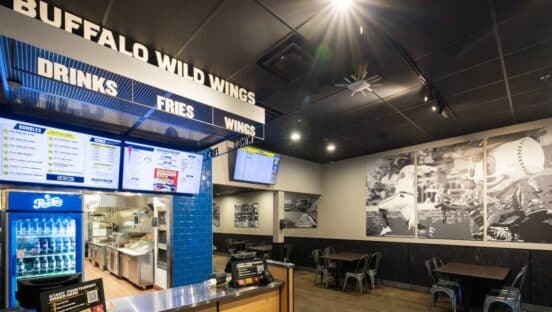Stories surrounding food-borne illness outbreaks in national quick-service restaurant chains have become very common, with many national brands having suffered at least one major food-borne illness outbreak. Whether the cause of the outbreak is due to contaminated food or unclean surfaces, food safety at these quick-service chains, which feed nearly all Americans at least once a week, needs to be regarded as a top concern and priority. Restaurants have an obligation to ensure customers are protected against food borne illness which affects too many Americans.
The Centers for Disease Control and Prevention (CDC) estimates that 48 million Americans suffer annually from food-borne illnesses, which lead to 128,000 hospitalizations and 3,000 deaths. Of those reports, 68 percent are attributed to restaurants and delis and, as many people know, it only takes one incident to destroy a reputation and a chain.
On top of the damaged reputation caused by an outbreak, the financial costs incurred by quick-service restaurants from food-borne illness outbreaks can be tremendous. According to a study done by Ohio State University consumer science professor, Robert Scharff, “The basic cost-of-illness model includes economic estimates for medical costs, productivity losses, and illness-related death. Using this basic model, Scharff estimates the total annual cost is $51 billion.” The cost of the top five food-borne pathogens alone is estimated at $6.9 billion annually.
So how can these national brands strengthen their food-safety practices without incurring significant costs in time and money?
There are a number of things restaurants can do in their efforts toward enhanced food safety to help elevate their restaurants to top food safety standards.
Reduce human error
This can be a restaurant’s biggest concern. Human error is impossible to eliminate entirely and is bound to happen. In a perfect world, employees would stay home until they fully recuperate from being ill, and customers that are sick with something as mundane as the common cold would stay home instead of going out for food.
But we don’t live in the ideal world, and new microorganisms are constantly being introduced into the environment, allowing diseases to spread. Compounding the problem is the fact that entry-level employees performing the cleaning and disinfecting of surfaces have been insufficiently trained (or ignore directions for application). One single and very effective way a quick serve can approach this problem is by reducing and/or eliminating microorganisms once they are introduced, through an RTU product, with no requirement to dilute or test levels of concentration. The benefit of an RTU product is the ability to deliver a consistent, effective dose with each application, with no mixing or testing required. Additionally, increased rigor and discipline in employee training in food-safety practices is critical.
Simplify practices
By simplifying and focusing sanitation practices and protocols, and by increasing training, national chain restaurants can reduce the risk of non-compliance from employees throughout the system. By selecting one common product and one set of common standards, corporate management can have an easier time watching and ensuring that food-safety standards are reducing risk across the board.
Use less harmful cleaning products
Many disinfectant products on the market can be toxic and irritating to those who use them. This may lead to employees’ reluctance to properly use the cleaning products, so as to avoid coming in contact with them. This, in turn, may result in improper and inconsistent cleaning of food contact surfaces, which can ultimately lead to the spread of food-borne illnesses. By replacing irritating products that cause skin and eye irritation, restaurants lower the risk of improper and inconsistent cleanliness.
Find products that are all encompassing
Most no-rinse sanitizer products on the market do not completely eliminate microorganisms from surfaces that come in contact with food on a daily basis. Moreover, most products are irritating, as mentioned above, which can lead to a lack of enthusiasm and care for food safety in quick-service restaurants. Restaurants need to find products that are all encompassing, ones that have low toxicity, are not irritating or harmful, and, most importantly, disinfect a broad range of microorganisms and harmful bacteria, with fast kill times, to minimize or eradicate the possible spread of food-borne illnesses.
Help to establish food-safety laws that are universally accepted
Recently, California made an attempt to pass a bill that would require all chefs and bartenders to start wearing gloves when cooking and preparing food. The bill caused major outrage among chefs and bartenders, many citing that it would hinder their ability to cook, prepare, and properly plate dishes. After much pushback, California lawmakers decided to revoke the law and permit chefs and bartenders to work barehanded. Since it is evident that laws like that will not pass without major pushback and outrage, lawmakers must find ways to push for food-safety practices in quick serves that can and should be universally accepted throughout the industry.
Implement new technology to support food-safety initiatives
Implementing new forms of technology to support restaurants’ food-safety initiatives is getting easier with the creation of various initiatives and devices. In Minnesota, for example, Stearns County recently launched a digital effort to educate restaurant workers on food safety, including proper hygiene, safe temperatures for food, and dangers of food-borne illness.
Another example of a plan to implement is the Hazard Analysis Critical Control Point (HACCP) program designed to help safeguard against the development and spread of food-borne illnesses. By following the program, restaurant owners and employees can greatly reduce the risk of unsafe food conditions in the restaurant.
Ensure supply chain compliance with strong food-safety practices
Many pathogens are introduced to the restaurant environment on food and ingredients from their suppliers. When these items are then prepared in the restaurant, the surfaces and equipment used can then become contaminated. Quick-service chains should work with their suppliers, and apply rigorous standards in their supplier selection process, in order to minimize these risks. Suppliers must be required to meet the food-safety standards established by the quick-serve chain, especially regarding the disinfecting of all food contact surfaces within the supplier’s operation, as well as the appropriate use of antimicrobial processing aids and interventions.
When all is said and done, however, no matter how quick-service restaurants choose to go about their food-safety practices, owners and managers must remember how much is at stake. When someone gets sick after eating at a restaurant, they are not likely to return soon, if ever. And, more importantly, that person is likely to tell family and friends that they got sick from their dining experience. Worse, in most cases, the restaurant chain is not likely to ever know. Word of mouth and social media have the potential to spread the bad news faster than the food borne illness can begin showing widespread symptoms, and it can have devastating effects with regard to major losses of customers, and thereby revenue, brand equity, and economic value.












